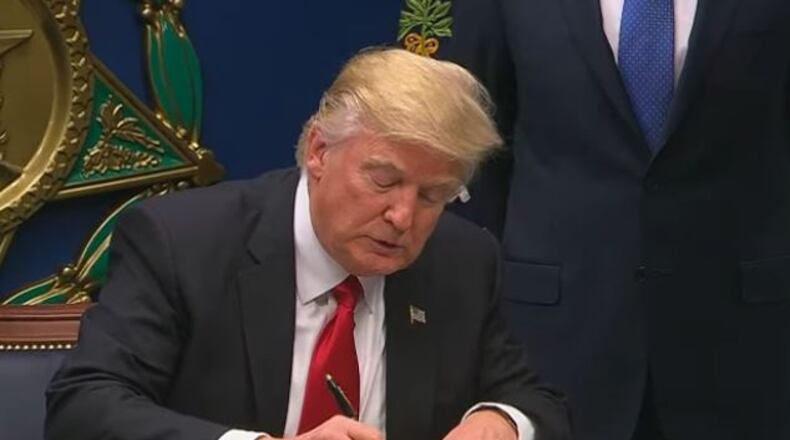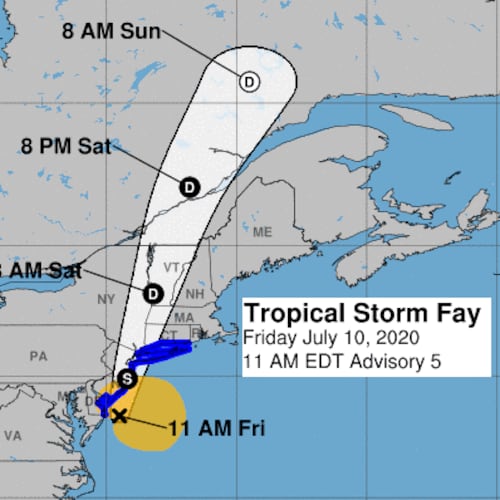While the Trump Administration has now set in motion new guidelines to be used by border and immigration agents in dealing with the detention and removal of people who are in the United States illegally, there could still be hurdles for the President's plan to more thoroughly enforce existing U.S. immigration laws - not only politically, but also in Congress, and in the courts.
Let's take a look at some of those issues:
1. Getting extra money from Congress might not be a snap. The Trump plan envisions 5,000 new border patrol agents and 10,000 new immigration agents. While those agencies may have some spare money around to shift into hiring new employees, permanent dollars will have to be approved by the Congress for the future, and that's where Democrats may be able to hold some leverage. A fight over that may also include a separate legislative battle over billions of dollars that would be needed to build a wall along the border with Mexico. And Democrats were already making noise about slowing down that effort, like Sen. Brian Schatz (D-HI).
2. We're going to need a bigger prison. With the Trump Administration ending the policy known as "catch-and-release" for illegal immigrants, that raises another issue - more money will likely be needed to help pay for detention facilities for illegal immigrants. If the Trump Administration is going to dramatically increase the number of people detained for being in the U.S. illegally, then they will need somewhere to put them - and that means jails, with people to staff them, and companies to run them. Right now, the feds can house about 40,000-50,000 people a day, which one group says comes with a price tag of about $2 billion a year, bringing private prisons into the mix.
3. This could move swiftly into the courts. As we saw with the reaction to President Trump's travel ban that restricted the refugee resettlement program and travel from seven majority-Muslim nations with terror concerns, there could also be legal challenges to how these immigration plans are implemented. "These memos confirm that the Trump administration is willing to trample on due process, human decency, the well-being of our communities, and even protections for vulnerable children, in pursuit of a hyper-aggressive mass deportation policy," the ACLU said in a statement. The ACLU added on a tweet which basically could have said, "See you in court."
4. Send them back to Mexico, no matter where they're from. One interesting part of the Trump immigration plan is how to deal with people who come over the border with Mexico, but aren't from Mexico. The new immigration guidance says that Section 235(b)(2)(C) of the Immigration and Nationality Act allows the feds to "return aliens arriving on land from a foreign territory contiguous to the United States, to the territory from which they arrived." It's not clear if Mexican authorities would allow non-Mexican nationals to be sent back across the border after being apprehended. Maybe that will be something the Secretary of State and Secretary of Homeland Security will talk about during a visit to Mexico this week.
5. Speaking of Mexico, what U.S. aid goes to Mexico? Tucked into the two immigration memos released on Tuesday was a section that orders a review within 30 days on how much aid goes to Mexico from the United States. "The President has directed the heads of all executive departments to identify and quantify all sources of direct and indirect Federal aid or assistance to the Government of Mexico," the text reads. It wasn't clear what that information would be used for, but there are some who have ideas on how that data might be applied by the Trump Administration.
6. No changes for "Dreamers" but that could change for some. The immigration memos make clear that President Trump is not reversing - as he promised to do - the Obama executive actions on immigration, which allowed immigrant "Dreamers" to get work permits and stay in the U.S. without facing the threat of deportation. But it is clear from the Trump Administration documents that if any of those younger immigrants get into trouble, then they could be on their way out of the U.S. For some Trump supporters, this is a difficult issue to understand, since he had made very clear what he wanted to do, if elected.
Credit: Jamie Dupree
Credit: Jamie Dupree
7. The White House says this is not a "mass deportation." Asked directly if the goal was "mass deportation" of illegal immigrants, White House Press Secretary Sean Spicer rejected that assertion, as he argued the main goal here is to focus on those who have broken the law while already in the United States illegally. "We have an obligation to make sure the people who are here in our country are here legally," Spicer said, as he said the rightful focus will be on criminal aliens. But one should expect that Democrats will use every chance they get to label this as a mass deportation, just like they will call his travel order, a "Muslim ban."
8. Immigrant groups vow to fight back. Not surprisingly, the view from groups sympathetic to illegal immigrants was much different than the message from the White House. "President Trump is putting his plan to deport millions of immigrants into high gear, while Republicans who said during the campaign they would not let this happen are idly standing by," said Kica Matos of the Fair Immigration Reform Movement. "The message is clear: don't come into contact with Immigration and Customs Enforcement (ICE) or local law enforcement because the dragnet is up and running," said the group Mi Familia Vota.
9. No National Guard language, but the same fine print. Remember the big dustup last Friday over this issue, when the Associated Press reported that the Trump Administration was considering using thousands of people from the National Guard to help with immigration enforcement? The draft memo that was leaked out last week actually had a lot of language that found its way into the final version. The first graphic is the section on the feds making agreements with local law enforcement personnel to help with immigration enforcement:
Credit: Jamie Dupree
Credit: Jamie Dupree
This next graphic is what that section looked like in the draft memo that was leaked to the AP last week - as you can see, the only difference in the first few paragraphs was the language on the National Guard was removed, the part that is in the orange rectangle:
Credit: Jamie Dupree
Credit: Jamie Dupree
You can read the memos by following the two links below:
About the Author
The Latest
Featured






